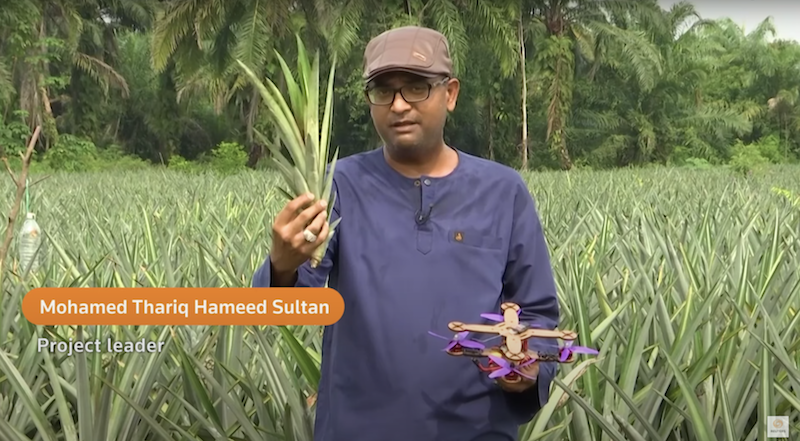 Drones already have tremendous potential to help reduce carbon emissions by replacing cars and trucks to deliver small packages or emergency supplies. Now, a team of researchers in Malaysia are exploring ways to make small UAS even more eco-friendly by building drones from pineapple leaves.
Drones already have tremendous potential to help reduce carbon emissions by replacing cars and trucks to deliver small packages or emergency supplies. Now, a team of researchers in Malaysia are exploring ways to make small UAS even more eco-friendly by building drones from pineapple leaves.“The most important thing of this particular design is we are using agricultural waste, which is we are transforming the leaf of the pineapple fiber into a fiber,” explained professor Mohamed Thariq Hameed Sultan of Malaysia’s Putra University in a recent interview with Reuters. The fiber is lightweight yet durable enough to be used for aerospace applications, including creating biodegradable parts for bantam drones.
Economic Benefits for Farmers
Early prototypes have reached altitudes of nearly 3300 feet and remained airborne for 20 minutes. “The next step would be to develop a slightly larger drone to be able to carry some payload,” such as cameras and other image sensors, William Robert Alvisse, Executive Secretary of the Malaysian Unmanned Drones Activist Society, told Reuters.
In addition to potentially reducing fossil fuel consumption, drones made from plant-fibers also may offer an economic boost to local pineapple farmers. Instead of burning or discarding the leaves of pineapple plants after the fruit is harvested, they now have a potential new income stream by selling their agricultural waste.
The research team also hopes to collaborate with members of the farm community in the Hulu Langat district, about 40 miles from Kuala Lumpur, to explore what many call the fourth Industrial Revolution, using new technology innovations to increase crop yields and make their jobs easier, said Alvisse.
 972-318-2811
972-318-2811 info@globalvideohq.com
info@globalvideohq.com